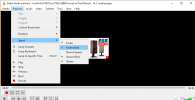As some of you may know, Paul Barton was there at National Research Institute when Dr. Toole started doing his research on speakers. In this interview with Darko, he fills in some of the details about that experience. It is about 50 minutes and sadly, I don't know how to speed it up on Soundcloud. But is very well worth a listen:
Interview with Paul Barton
As an aside, Darko without mentioning my name, asks Paul about listening to speakers to mono. To his surprised, Paul confirms why this is better and explains why. There are other moments where Darko has no choice but to accept the technical points Paul is making about importance of measurements, etc.
Here are some bits I transcribed if you don't want to listen to it:
---
Before you were introduced to dr. Toole were you designing by ear? Yes, I was designing based on early days ..... pink noise listening to it and music... when I took the first speaker to Ottawa [at NRC], there were clearly things that could be improved based on theory that speaker is a window.... flat frequency response and dispersion are all a factor."
"[measurements at NRC] put a microscope on what I was doing... correlating measurements with listener preference."
1. Most of the people most of the time agree on relative quality of a group of loudspeaker. There is no personal taste when it comes to asking what sounds the most natural. That is the goal to make the recording exactly the musician intended.
2. Properly interpreted set of objective measurements correlate strongly with listener preferences. You can see the measurements and predict how listeners will prefer.
[3] Musical tastes and experience is not material.
When listeners go into the room, it will take a few minutes for listeners to adjust to the acoustics of the room. After that, they are able to sort out the speakers from room.
We did both stereo and mono listening.... did the same experiment in mono and stereo (double blind)...when testing in stereo the anchor got better in stereo because stereo masks tonal aspects of a speaker. You get better differentiation between sonic differences of speakers in mono than stereo. Most of stereo imaging we hear is in the recording, not the room.
The final tuning is done by ear, i.e. ratio of highs to lows. Darko summarizing: "95% is done with measurements last bit is done by ear." Tuning is still done using measurements. Subjecting himself to double blind as he tweaks.
"We can measure everything... but the scale of it you judge by ear."






